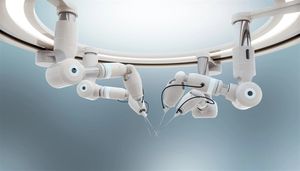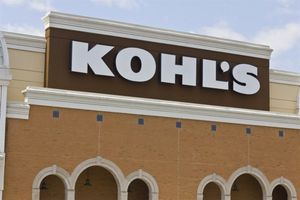
Home appliances manufacturer Whirlpool (NYSE: WHR) missed Wall Street’s revenue expectations in Q1 CY2025, with sales falling 19.4% year on year to $3.62 billion. On the other hand, the company’s outlook for the full year was close to analysts’ estimates with revenue guided to $15.8 billion at the midpoint. Its GAAP profit of $1.27 per share was 20.9% below analysts’ consensus estimates.
Is now the time to buy WHR? Find out in our full research report (it’s free).
Whirlpool (WHR) Q1 CY2025 Highlights:
- Revenue: $3.62 billion vs analyst estimates of $3.66 billion (19.4% year-on-year decline, 1% miss)
- EPS (GAAP): $1.27 vs analyst expectations of $1.61 (20.9% miss)
- Adjusted EBITDA: $267 million vs analyst estimates of $313.5 million (7.4% margin, 14.8% miss)
- The company reconfirmed its revenue guidance for the full year of $15.8 billion at the midpoint
- EPS (GAAP) guidance for the full year is $8.75 at the midpoint, missing analyst estimates by 15.4%
- Operating Margin: 5.1%, up from -2.6% in the same quarter last year
- Free Cash Flow was -$793 million compared to -$988 million in the same quarter last year
- Market Capitalization: $4.45 billion
StockStory’s Take
Whirlpool’s first quarter results reflected the impact of a volatile macroeconomic backdrop and ongoing industry challenges. Management identified Asian competitors’ pre-tariff inventory loading and a subdued discretionary demand environment as key factors weighing on top-line performance. CEO Marc Bitzer emphasized that while replacement demand remained solid, discretionary purchases were weak and consumer confidence declined as the quarter progressed. The company also noted that higher component costs and cost disadvantages, particularly from tariffs and steel prices, continued to affect margins, though cost reduction initiatives and pricing actions helped partially offset these pressures.
Looking ahead, Whirlpool’s forward guidance is driven by its expectation that newly imposed tariffs will level the competitive playing field for domestic manufacturers in the second half of the year. Management highlighted a significant slate of new product launches and ongoing cost reduction measures as central to margin improvement targets. CFO Jim Peters explained that incremental pricing actions and supply chain adjustments are expected to mitigate tariff-related headwinds, with the full benefit of these actions anticipated in the latter half of 2025. The company reiterated its full-year guidance but acknowledged ongoing uncertainty in consumer demand and the broader economic environment.
Key Insights from Management’s Remarks
Whirlpool’s leadership focused on market disruption from pre-tariff inventory loading, margin management through pricing and cost actions, and the evolving benefits of new trade policies. These themes dominated management’s discussion of the Q1 performance and outlook.
-
Inventory Loading Disruption: Management cited aggressive inventory loading by Asian competitors ahead of new tariffs, which led to significant short-term market distortion. CEO Marc Bitzer explained, “Asian appliance producers significantly increased imports into the US ahead of tariffs... This market disruption will likely continue into Q2 as competitors attempt to sell through their inventory.”
-
Tariff Policy Impact: Whirlpool’s executives detailed how new US tariffs are expected to close longstanding cost disadvantages for domestic producers. Bitzer noted that loopholes in prior tariff structures resulted in roughly a $70 per unit disadvantage for Whirlpool due to higher steel and component costs. The company’s 80% US-based manufacturing footprint positions it to benefit from these changes as the new policies are fully implemented.
-
Pricing and Cost Actions: Management highlighted the importance of recent and planned pricing actions in response to higher input costs. Peters stated that more than half of the planned offset to tariff headwinds will come from price increases, with additional gains from continued supply chain and manufacturing efficiencies.
-
Product Innovation Pipeline: The company is executing its largest North American product transition in over a decade, with more than 30% of its portfolio set to launch new products in 2025. Bitzer described strong initial trade response to new appliances like the KitchenAid induction cooktop and JennAir wall oven. This wave of innovation is expected to drive both sales and margin improvement in the second half of the year.
-
Segment Performance Variation: While North America sales were flat due to market softness, the MDA Asia and SDA Global segments delivered robust organic growth and margin expansion, driven by new product momentum and favorable price mix. Management expects these trends to continue supporting overall results.
Drivers of Future Performance
Management’s outlook for 2025 centers on the anticipated stabilization of the US appliance market following tariff implementation, execution of new product launches, and continued cost control. The company’s focus remains on factors it can control, such as pricing, manufacturing efficiency, and supply chain adjustments, amid persistent demand uncertainty.
-
Tariff Effects and Competitive Dynamics: The phasing in of new US tariffs is expected to reduce the cost disadvantage Whirlpool faces versus Asian competitors, potentially resulting in higher production volumes and market share gains for its US factories in the second half of the year.
-
New Product Launches and Portfolio Shift: The rollout of new appliances—particularly in the North American market—is expected to support both organic growth and improved margins. Management believes strong trade response to these launches will be a key driver of performance as the competitive landscape shifts.
-
Cost Reductions and Pricing Discipline: Ongoing cost takeout actions, combined with incremental pricing initiatives, are planned to mitigate input cost inflation and direct tariff headwinds. Management sees these measures as vital to achieving targeted margin expansion, even if underlying demand remains soft.
Top Analyst Questions
-
Laura Champine (Loop Capital): Asked about the potential impact on Whirlpool’s outlook if tariff rates are reduced. CEO Marc Bitzer stated that even tariffs as low as 20% would affect commercial behavior, but higher rates are necessary to motivate factory relocation.
-
Sam Darkatsh (Raymond James): Questioned the scope and effectiveness of recent price increases. Bitzer explained that multiple pricing actions have been taken to address component cost inflation, with full-year pricing expected to be well above 1% and potentially approaching 2%.
-
Michael Rehaut (JPMorgan): Sought clarification on the magnitude and timing of tariff headwinds and mitigation efforts. Management responded that the majority of the tariff impact will be back-half weighted and offset primarily through pricing and cost reduction, with some benefit from supply chain adjustments.
-
Susan Maklari (Goldman Sachs): Asked about margin progression in North America and the sustainability of SDA segment margins. CFO Jim Peters stated that Q2 performance is expected to mirror Q1, with margin improvement anticipated in the second half due to pricing, product launches, and cost actions.
-
David MacGregor (Longbow Research): Inquired about the percentage of US volume affected by tariff-impacted imports and the growth trajectory for direct-to-consumer sales. Bitzer explained that imports impact nearly the entire product range, and direct-to-consumer sales are growing and help drive follow-on business and customer loyalty.
Catalysts in Upcoming Quarters
In the coming quarters, the StockStory team will be closely monitoring (1) the pace at which pre-tariff inventory in the US market is absorbed and whether this leads to a more stable competitive environment, (2) the execution and market reception of Whirlpool’s extensive new product launches, especially in North America, and (3) the realization of margin improvement as tariff-related cost disadvantages are mitigated. Additional attention will be paid to the company’s ability to maintain pricing discipline and deliver on its cost reduction targets amid a still-uncertain demand environment.
Whirlpool currently trades at a forward P/E ratio of 8.6×. Should you double down or take your chips? See for yourself in our free research report.
The Best Stocks for High-Quality Investors
Market indices reached historic highs following Donald Trump’s presidential victory in November 2024, but the outlook for 2025 is clouded by new trade policies that could impact business confidence and growth.
While this has caused many investors to adopt a "fearful" wait-and-see approach, we’re leaning into our best ideas that can grow regardless of the political or macroeconomic climate. Take advantage of Mr. Market by checking out our Top 6 Stocks for this week. This is a curated list of our High Quality stocks that have generated a market-beating return of 176% over the last five years.
Stocks that made our list in 2020 include now familiar names such as Nvidia (+1,545% between March 2020 and March 2025) as well as under-the-radar businesses like the once-micro-cap company Kadant (+351% five-year return). Find your next big winner with StockStory today.






